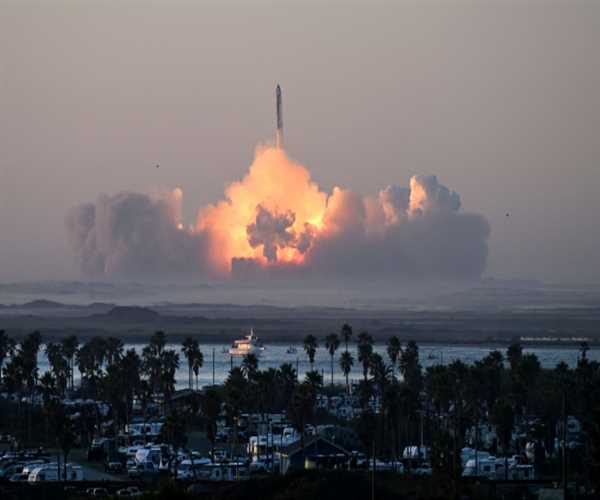
19-Mar-2024 , Updated on 3/19/2024 4:13:34 AM
SpaceX most powerful rocket is missing after achieving grand success
SpaceX's Starship, the largest and most powerful rocket in history, lifted off from the company's Starbase facility in Boca Chica at 6.55 PM IST on Thursday. Unlike its previous two test flights, the Elon Musk-led company's mega-rocket did not burst and successfully launched the spaceship into orbit. However, SpaceX later announced that it had lost the spacecraft.
The Starship rocket traveled farther than the previous two flights, but SpaceX claimed it lost contact with the spacecraft when it entered Earth's atmosphere. It was meant to splash down in the Indian Ocean, but the stress of reentry likely caused it to disintegrate or break apart.
However, the third test flight should not be considered a total failure. It accomplished numerous mission goals, marking a significant step forward for the spaceship and launch mechanism that Musk hopes will transport humans to the Moon.
Initial reactions:
Concern about safety:
The greatest worry is the safety and well-being of the persons participating in the mission, including the astronauts, ground crew, and any other parties affected by the missing rocket.
Technical Analysis:
There may be an instinctive need to perform a detailed technical investigation to discover the cause of the rocket's disappearance. Understanding technological failures or anomalies is critical for avoiding such situations in the future and maintaining the dependability of future space missions.
Potential explanations:
Communication Loss: It is possible that the rocket lost communication during its journey or failed to make contact after it arrived at its intended target. This might be due to a variety of reasons, including device failure or environmental interference.
Navigation Error: Another possibility is that the rocket diverged from its intended path owing to navigational problems or external influences such as gravitational anomalies or debris. Precise navigation is vital to the success of space missions, and even tiny errors can have serious implications.
Mechanical Failure: It is also conceivable that the rocket suffered a mechanical failure or malfunction during launch or while in space. Despite thorough testing and quality control systems, space travel is inherently dangerous, and unexpected technological complications may develop.
Considerations Moving Forward: Moving forward, SpaceX and relevant agencies should prioritize openness and open communication about the missing rocket and continuing investigations. Keeping stakeholders informed promotes public trust and confidence in the space sector.
Safety standards: SpaceX and other space organizations must examine and strengthen safety standards to reduce the probability of similar mishaps in future flights. This might include improved monitoring systems, redundancy measures, and contingency plans for different eventualities.
Learning Opportunities: Each setback provides a chance to learn and develop. Analyzing the reasons that led to the rocket's disappearance might provide useful insights for future mission planning, design considerations, and operating procedures.
Conclusion:
Although the news of SpaceX's missing rocket is concerning, it's important to take a balanced attitude and evaluate possible causes and ramifications. As we await further information and updates from SpaceX and appropriate agencies, it is critical to prioritize safety, openness, and continual progress in the search of space exploration.

CONTENT WRITER
Writing is my thing. I enjoy crafting blog posts, articles, and marketing materials that connect with readers. I want to entertain and leave a mark with every piece I create. Teaching English complements my writing work. It helps me understand language better and reach diverse audiences. I love empowering others to communicate confidently.
Join Our Newsletter
Subscribe to our newsletter to receive emails about new views posts, releases and updates.
Copyright 2010 - 2026 MindStick Software Pvt. Ltd. All Rights Reserved Privacy Policy | Terms & Conditions | Cookie Policy